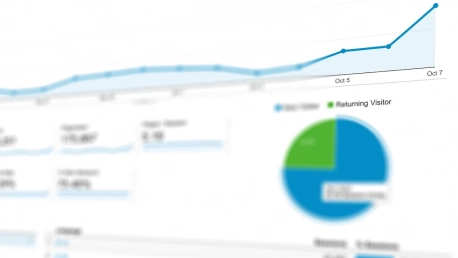In this age of information overload, mastering marketing analytics has become vital for businesses looking to thrive. As they collect an ever-growing trove of data from their marketing efforts, the challenge lies in making sense of this data and using it to inform strategic decisions. Marketing analytics serves as a compass in this quest, guiding companies to extract valuable insights from their data.To excel in marketing analytics, organizations must delve deep into the nuances of their data, interpreting and leveraging it to sculpt powerful marketing strategies. This art involves not only analyzing current campaigns but also forecasting trends, understanding customer behaviors, and measuring the effectiveness of various marketing channels.As businesses become increasingly data-driven, those who can deftly navigate the complexities of marketing analytics will gain a competitive edge. It’s not just about having the data but understanding what it tells you about your customers, your market, and your own performance. Learning to interpret this data correctly is paramount to crafting marketing strategies that not only resonate with the target audience but also deliver tangible results. This article aims to be the guide that helps businesses unlock the transformative power of marketing analytics.
1. Define Measurement Objectives
Before delving into the ocean of data, it is crucial to pinpoint the specific metrics that will best serve your campaign’s objectives. Whether your focus lies in nurturing leads, optimizing conversion rates, or amplifying brand awareness, establishing clear and measurable objectives sets the stage for a directed analytics approach. This preliminary step not only ensures a targeted analysis but also promotes a coherent alignment with the end goals of your marketing campaign.The power of defining these objectives lies in creating a foundation on which data can be transformed into valuable insights. By understanding the desired outcomes, such as customer engagement or increased market share, businesses can align their analytical processes to uncover the factors influencing these metrics, paving the way for informed and strategic actions moving forward.
2. Establish Performance Benchmarks
Defining success metrics for a marketing campaign is essential, serving as a measure to compare against actual outcomes. For instance, seeing an uptick in customer loyalty through positive feedback could be as valuable as the number of clicks on a digital advertisement.Benchmarking involves understanding what constitutes a successful outcome and attaching measurable targets to these aspects. It is crucial to set these benchmarks to regularly assess progress and leverage insights from these assessments to refine future marketing strategies. By analyzing past outcomes, the benchmarks guide the direction of forthcoming efforts and foster an environment of continuous improvement.These metrics must align with the predefined goals of the campaign, ensuring alignment with larger organizational objectives. In doing so, benchmarks not only help track and celebrate achievements but also anchor the strategy in meaningful results that propel the brand forward, whether it’s through building brand loyalty, enhancing engagement, or driving sales. It is through this meticulous process of benchmarking and analysis that marketing campaigns can not only be evaluated but also honed for greater efficiency and effectiveness in the long run.
3. Evaluate Your Current Proficiencies
An honest assessment of your company’s current capabilities in marketing analytics is a key step towards enhancement. By evaluating existing strategies, tools, and methods, businesses can identify gaps in their approach and aspects that require advancement. This might involve a critical analysis of how offline campaigns are being measured or determining the effectiveness of different media channels that have been deployed for customer outreach.Understanding the strengths and vulnerabilities in your existing marketing efforts allows for strategic improvements and the opportunity to leverage analytics where it will be most impactful. Such introspection aids in refining tactics, ensuring that the marketing efforts are not only well-coordinated but also poised for heightened efficiency and performance.
4. Deploy a Marketing Analytics Solution
With the relentless evolution of consumer behavior and the continuous growth of data, embracing advanced marketing analytics tools has never been more essential. Implementing a sophisticated platform that integrates unified marketing measurement can shed light on campaign efficacy in real time.Utilizing an analytics solution streamlines the process of data collation, interpretation, and application, leading to informed decision-making and superior campaign outcomes. The analytics platforms of today are equipped to process extensive datasets rapidly, empowering marketers to stay agile and responsive to dynamic market conditions. This proactive approach in leveraging technology elevates the value derived from every marketing effort, ensuring that essential resources are invested judiciously for maximum return on investment.In conclusion, marketing analytics stands as the cornerstone of modern strategic marketing. By systematically defining objectives, setting benchmarks, assessing proficiencies, and deploying robust analytics solutions, businesses can harness the true potential of their data – driving growth, improving customer satisfaction, and bolstering competitive advantage in the market.









